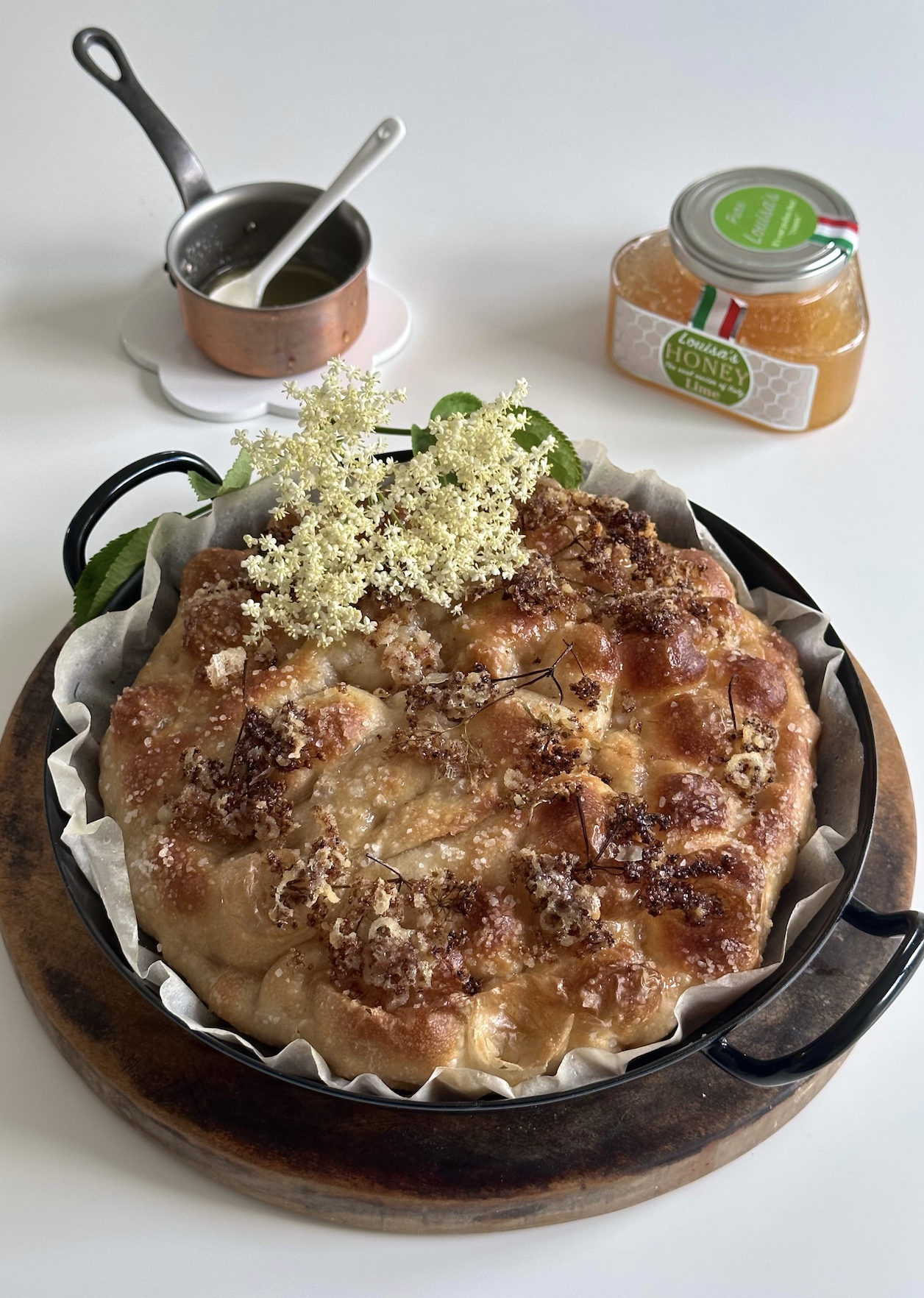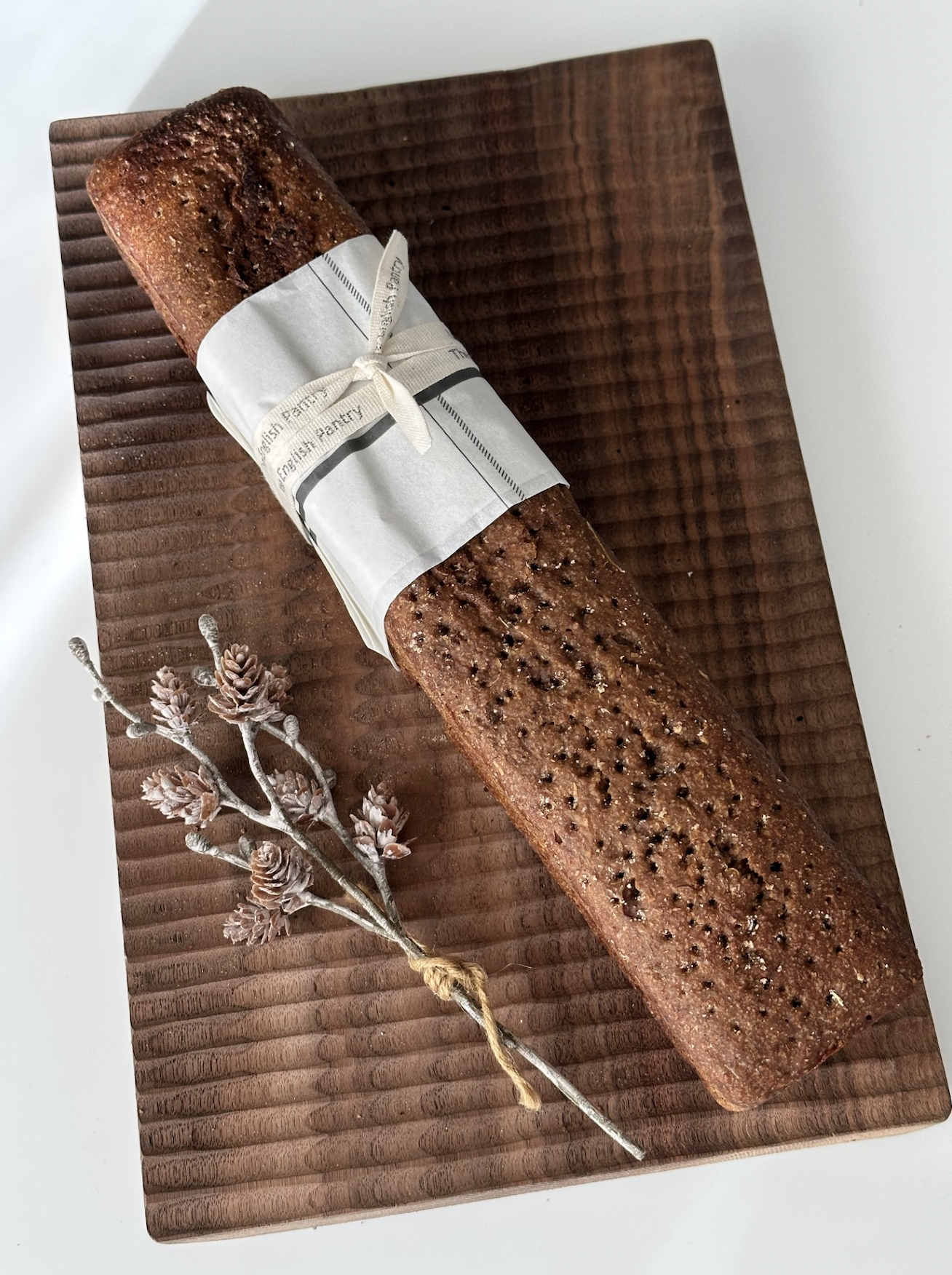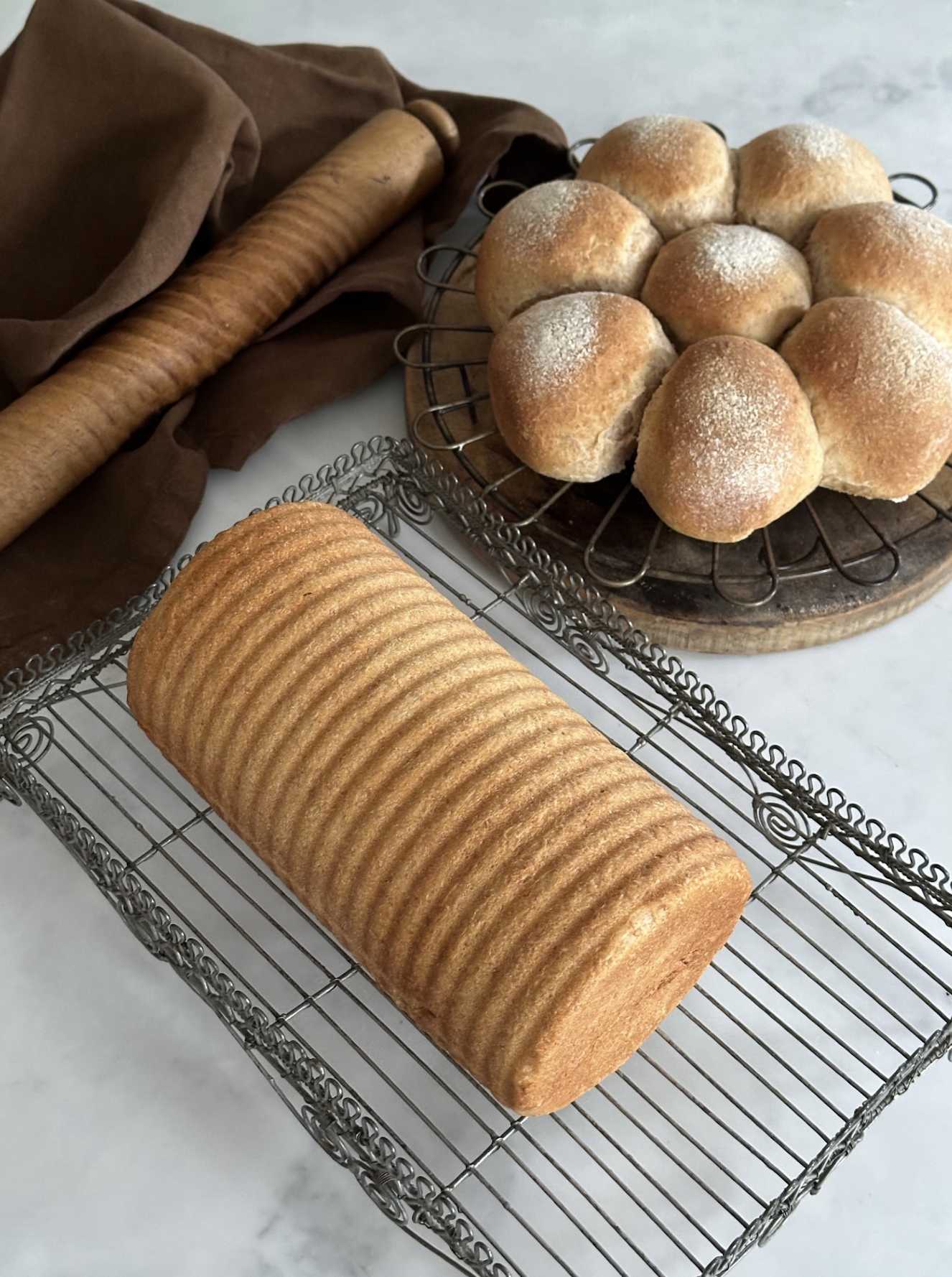Welcome to The Sourdough People, your friendly digital gathering place for all things sourdough bread! We’re all about sharing the joy of sourdough baking and celebrating the amazing people, products, and brands that make this community so special. Today, we’re excited to feature Marie Lester, a wonderful sourdough baker whose passion for the craft shines through in every loaf she bakes. Marie’s journey started with a unique love for vintage bread boards and has grown into a beautiful exploration of sourdough baking. She’s here to share her experiences, tips, and the warmth that comes from baking with love. So, grab a cup of tea, settle in, and let’s get to know Marie. And don’t forget to follow her on Instagram at @marielesterbaker for a daily dose of sourdough inspiration!
Please tell us where you are from and what you love about where you live?
I was born and raised in the Fens, a distinctive marshland region in eastern England. After spending over a year living in France, I moved to London, where I experienced the vibrant urban lifestyle. However, in 2020, I sought a change and relocated to the Cotswolds, an area renowned for its picturesque landscapes. I was drawn to the Cotswolds by the lush green vistas, the invigorating fresh air, and the expansive fields of wheat that stretch as far as the eye can see. This move marked the beginning of a new chapter in my life, to have a more creative existence – to be able to work more with my hands and get deeper into bread-making. As a child, I was very creative. I had a wonderful art teacher when I was 10 who had me making silver jewellery with my own polished gem stones. As an adult I had lost that connection. I hear many people say the same.
Marie, what initially sparked your interest in sourdough baking, and how did you begin your journey?
My route to sourdough baking began with a vintage Swiss bread board, made of wood and intricately carved with a border of edelweiss. I found others – Belgian, French, German, Greek, Swedish and English – in different sizes and styles carved with borders of hops, flowers, acorns, wheat, barley and mottos such as ‘give us this day our daily bread’ and ‘speed the plough’. On my hunt for boards, I came across a lady in nearby Putney who had recently inherited a collection of bread boards and knives. She had created a museum – in her home – which one could visit for afternoon tea. The idea of learning about the history and designs of bread boards over a cup of tea and a scone was very appealing. And so it was that I met Madeleine.
We talked about a book that she wanted to write on the bread boards. Initially she couldn’t get the interest of a publisher – the subject was a little too esoteric. I suggested that some photos of breads on the boards along with recipes might be included. A publisher was found (Prospect Books) and to my delight, Madeleine came back to me and said ‘you’ve got the job’. And my bread making journey began. I had about a month to create and bake as many breads as I could. I relished the challenge, went into my kitchen and started to learn.
How has being based in UK added to your sourdough journey?
We grow some wonderful grains here in the UK. I love trying new ingredients and working out how to bake to their strengths. I often begin with an ingredient (such as hemp flour) and create a recipe around it.
How has your approach to sourdough baking evolved since you first started?
I began as an experimental baker and I’m still an experimental baker – just a bit more experienced.
Do you have a signature sourdough recipe or technique you’re particularly proud of? Can you share a bit about it?
I often use my ‘magic of three’: whole grain wheat for flavour and nutrition, spelt/einkorn for flavour and extensibility, and strong wheat bread flour for strength. I like to use around 50% wholemeal in a loaf. Stoneground whole wheat has a reputation of being difficult to work with because all the bran is retained. Coarse bran is said to ‘cut through gluten like little knives’. A technique which has become part of my baking process is to take those little knives and turn them into extra food for the yeasts. This helps to get a better rise, improve flavour and increase the nutritional value of the bread.
The science is cool: by removing the largest particles of bran early on, the gluten in the main dough can be developed. The sifted bran is immediately scalded with recently-boiled water (I use twice the weight of the bran). The hot water scald kills both the yeast and LAB (lactic acid bacteria) present in the sifted bran but creates an ideal environment for the amylase enzyme to convert the starches into sugars. When the scalded bran is added back to the dough, these sugars provide extra food for the yeasts and LAB present in dough.
- The yeasts convert the sugars into alcohol and CO2 – contributing to the rise.
- The lactobacilli (LAB) convert the sugars into the lactic acid and acetic acid – adding new flavours.
Who are some of the people, brands, or companies in the sourdough industry that have inspired you?
Asian bakers have inspired me. At the end of the 19th century, the Japanese influenced by western culture took the white loaf and turned it into shokupan. By using with a yudane (or tangzhong) they made new and distinctively-shaped soft breads, described as fuwa fuwa, which means “fluffy, like a cloud’. In turn, I have created breads such as my ‘English Country Cube‘ – using a locally soft wheat blend, spelt and high protein bread flour. I often decorate my cube breads with edible flowers. This transfer and fusion of ideas is for me what creative bread-making is all about.
What are your must-have tools or favorite equipment for sourdough baking, and why?
Stoneware bowls are amazing – both vintage and new. Stoneware keeps the dough at a consistent temperature as it is proving. Brotform bannetons lined with mesh creates an impactful crust. I also use my own design banneton covers using special linens.
How do you source your ingredients, and do you have any specific preferences or tips regarding flour, water, or salt?
Understanding your flour is key. When I started baking, I didn’t know the difference between roller-milled and stoneground flours. I like to know the variety of grain I’m using. I don’t like bags of flour which are simply labelled ‘whole wheat’. Grains differ enormously and from harvest to harvest. I like to source organic or ‘low input’ flours. I don’t want to consume glyphosate or any other toxic herbicides or pesticides. I also don’t like the practice some millers have of buying low protein grain, milling it and then adding gluten to it without stating this on the flour bag.
Can you share a particularly challenging experience you’ve had with sourdough baking and how you overcame it?
I was asked to create a recipe for a heritage flour blend which was 75% spelt/25% einkorn and emmer. Initially, I found spelt tricky as the makeup of gluten is very different to wheat. It has a much higher ration of gliadin to glutenin than wheat – which makes it very extensible. The key was to lower the hydration to 70%, build the dough structure quickly, and then to let it finish proofing in the banneton. Using this method, I got good results.




What do you enjoy most about baking sourdough, and how does it impact your daily life?
For me, sourdough is a blend of art and science. I am a sensory baker first and foremost, but I also try to learn the science of baking – normally through making mistakes. The flavour combinations, the scoring and decorating takes bread into the world of art – and I enjoy the creativity of it. I bake bread every day, or every other day. I develop new recipes, and I teach bread-making – so it has an important place in my daily life.
How do you balance tradition and innovation in your sourdough baking practices?
I make all my sourdough breads by hand – using a mixer only for my enriched breads. I constantly try new ingredients, gadgets and techniques. This can be quite taxing, so for a mental break I go back to a tried and tested recipe!
Have you noticed any new trends or innovations in sourdough baking recently?
The baking community is advancing bread making all the time. New gadgets like aliquot jars and pH readers come out from time to time.
What are some common misconceptions about sourdough baking that you’ve encountered, and how do you address them?
There are many misconceptions about sourdough. I often do parallel baking, altering just one variable in one of the doughs to see what difference it makes. For example, I discovered that scalded bran can produce a better rise and crumb than its bran-less twin. I abandoned dough ‘stitching’ after I found that I could get much a better ovenspring without it. I stopped covering my bannetons with plastic when retarding dough overnight in the fridge. I now use my own covers. In the morning the dough surface is dry and I get a better bake.
In your opinion, what is the most underrated aspect of sourdough baking?
People often don’t understand how much time and effort it takes to make sourdough bread – or the quality of it. The baker normally chooses the best local ingredients and strives to produce the best – bread is a labour of love for most of us. You simply cannot compare the quality of a sourdough loaf with bread which is made by a mechanised process.
Are there any books, videos, or online resources you’d recommend to those wanting to learn more about sourdough baking?
Many of the books on sourdough say the same basic things. Instagram is a great place to explore the breads of the world and the different techniques used to make them. It is also a very experimental place if you follow the right bakers. Excitingly, boundaries are being pushed all the time.
What advice would you give to someone just starting out with sourdough baking?
Focus on building and maintaining a strong starter. If you can find a baker who will give you some of their starter, that’s a help. Then choose one good recipe and make it over and over again until you understand the process and can get the result you are looking for. Nothing shortcuts experience.
How do you engage with your followers and the sourdough community on social media? What’s your style?
I have always enjoyed making reels so they feature a lot. I also enjoy photography so I mix in a few stills of my bakes. I enjoy initiating baking challenges such as the #singlefingerloaflift where the baker had to bake a bread with an ear which was big enough to lift the loaf with one finger. More recently I started the #ricracHigh5 challenge where using just 5 lines of short scores which didn’t burst when the dough was baked. This was a challenge which was as much about baking as scoring, so it was very educational (I only succeeded with my 3rd go!).
Have you participated in any collaborations or community events related to sourdough baking, and what was your experience?
In my area, there is a network of farmers, millers and bakers called the Cotswold Grain Network which brings people together who wouldn’t necessarily meet. We share knowledge and experience in ways which are unexpected. You don’t always know what you don’t know.
What’s your favourite sourdough recipe to bake for yourself, friends, or your loved ones?
I couldn’t possibly choose a single recipe. My favourite aspect of sourdough is the variety it brings. On my baking rotation I have rye breads, milk breads, multi-seeded sourdoughs, my Brownie bread (a marbled cocoa and hazelnut), brioches, focaccias, pizzas. Sourdough is endlessly versatile.
Do you have any tips or suggestions on how to manage a healthy sourdough starter culture?
Feed it consistently and give it some wholemeal. Just this week a home baker contacted me in despair about her sourdough starter. Her starter was lifeless and she was about to throw it out. She had been feeding it exclusively with all purpose flour. Luckily i discovered that she had some chapati flour as well. Chapati flour is just finely-milled whole wheat – perfect as it contains the bran so by adding some of this to the feed, it introduced new wild yeasts and bacteria and – like magic – her starter came back to life again.
Do you have any upcoming projects or plans related to sourdough baking that you’re excited about?
Yes. I am now writing recipes for the German bread magazine called “Brot“. This is a great honour as Germany has a strong bread culture. I am also trying to collate all my recipes into a single book.
What do you hope to contribute or be remembered for most in the sourdough community?
Encouraging and inspiring others with ideas or simply to have a go!
Can you describe a moment when you felt particularly proud or fulfilled in your sourdough baking journey?
The last time I opened the oven, saw a loaf of bread and thought to myself, “I made this”.
If you could give one piece of advice to your past self when you started sourdough baking, what would it be?
Use your senses and follow your instinct. Trust me.
Is there anything else Marie that you would like the community to know about you or things you would like the readers to potentially purchase or subscribe to?
If you’re interested in sourdough bread, following me on Instagram at @marielesterbaker is a great choice. I share a wide range of sourdough recipes, from classic loaves to innovative creations, along with tips and techniques to help you improve your baking skills. My posts are not only informative but also visually appealing, showcasing the beauty of artisanal bread. Whether you’re a beginner or an experienced baker, you’ll find inspiration and valuable insights to enhance your sourdough journey.
In Closing
Thank you for joining us on this delightful journey into the world of sourdough with Marie Lester. We hope her story has inspired you to explore the art of sourdough baking with even more passion and curiosity. Remember, every loaf tells a story, and we’re here to celebrate them all. Don’t forget to follow us on Instagram at @sourdoughbread.ca for more sourdough inspiration, and sign up for our email newsletter to stay updated on all the latest features, tips, and recipes. If you have an interesting, fun, or unique sourdough story to share, we’d love to hear from you! Use our website intake form to send us your stories, and who knows, you might be our next feature. Together, we are the dough that makes us collectively rise.
Happy baking, sourdough friends!






















































